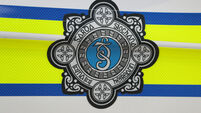Jet narrowly avoids crashing into Kerry mountains.
A report by the Department of Transport’s Air Accident Investigation Unit (AAIU) has revealed details of how the Gulfstream jet mistakenly believed it was on course to land at Kerry Airport when it was in fact 10km south of the runway.
It also expressed concerns about the lack of radar at Kerry Airport, given its location in a mountainous region, and described the absence of such equipment as “a safety issue”.
AAIU inspectors said the aircraft was flying through cloud and “heading directly towards high ground in excess of 3,000ft” at a time when its altitude was recorded as 702ft.
An air traffic controller at Shannon Airport had noticed the potential problem and alerted the control tower at Kerry Airport to instruct the aircraft to climb immediately. Around the same time, the aircraft’s own ground proximity warning system went off as it descended to just over 700ft.
The incident took place shortly after the Gulfstream had left Kerry Airport on July 13, 2009, bound for Luton, with two crew and one passenger on board.
However, the aircraft suffered a cracked windshield within a few minutes of take-off, followed by strong vibrations in one of the aircraft’s two engines, leading the pilot to make a decision to return to Kerry.
He informed AAIU investigators that he thought he had been flying at around 3,000ft when the alarm had sounded. The pilot was instructed to climb immediately to 3,500ft.
Records show that the plane was within seconds of crashing into the ground as it had been descending at a rate of 1,300ft per minute. The AAIU report said the speed of the descent was “excessive in the circumstances”.
“It is fortunate that the descent was made over ground that was relatively low-lying in comparison to much of the terrain in the vicinity,” it said.
AAIU inspectors said it was also fortunate that the potential danger had been noted by an air traffic controller at Shannon Airport. They claimed his actions had quite possibly prevented the aircraft from crashing.
The main cause of the near-accident was the crew’s “serious loss of navigational and situational awareness” while contributory factors were a number of “rushed and inappropriate decisions” taken during the flight by the pilot and his first officer.
The crew also experienced difficulties in complying with instructions by air traffic controllers at Kerry Airport to conduct an instrument landing used by pilots in poor visibility. The plane continued to experience navigational difficulties before it eventually landed safely over 20 minutes after the warning alarm had first been triggered.
A subsequent technical inspection of the aircraft revealed that one of its engines had sustained serious damage from a foreign object. However, the AAIU said there was no link between the cracked windshield and the engine damage. The cracked windshield was the result of an electrical fault.
The AAIU recommended that Kerry Airport and the Irish Aviation Authority should review the absence of radar at the airport which meant the local air traffic controller was unable to verify the location of the Gulfstream jet.












